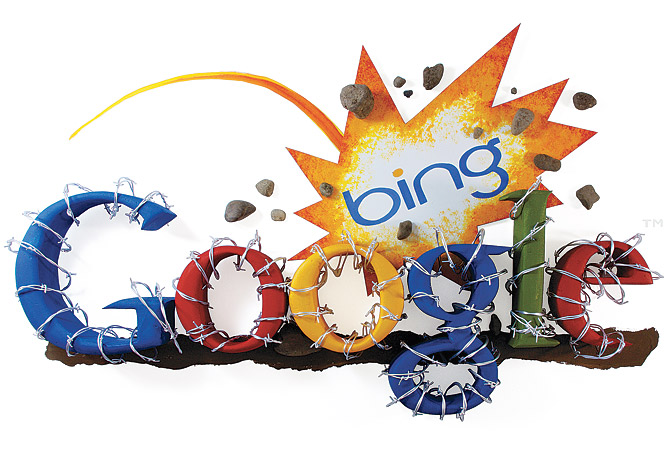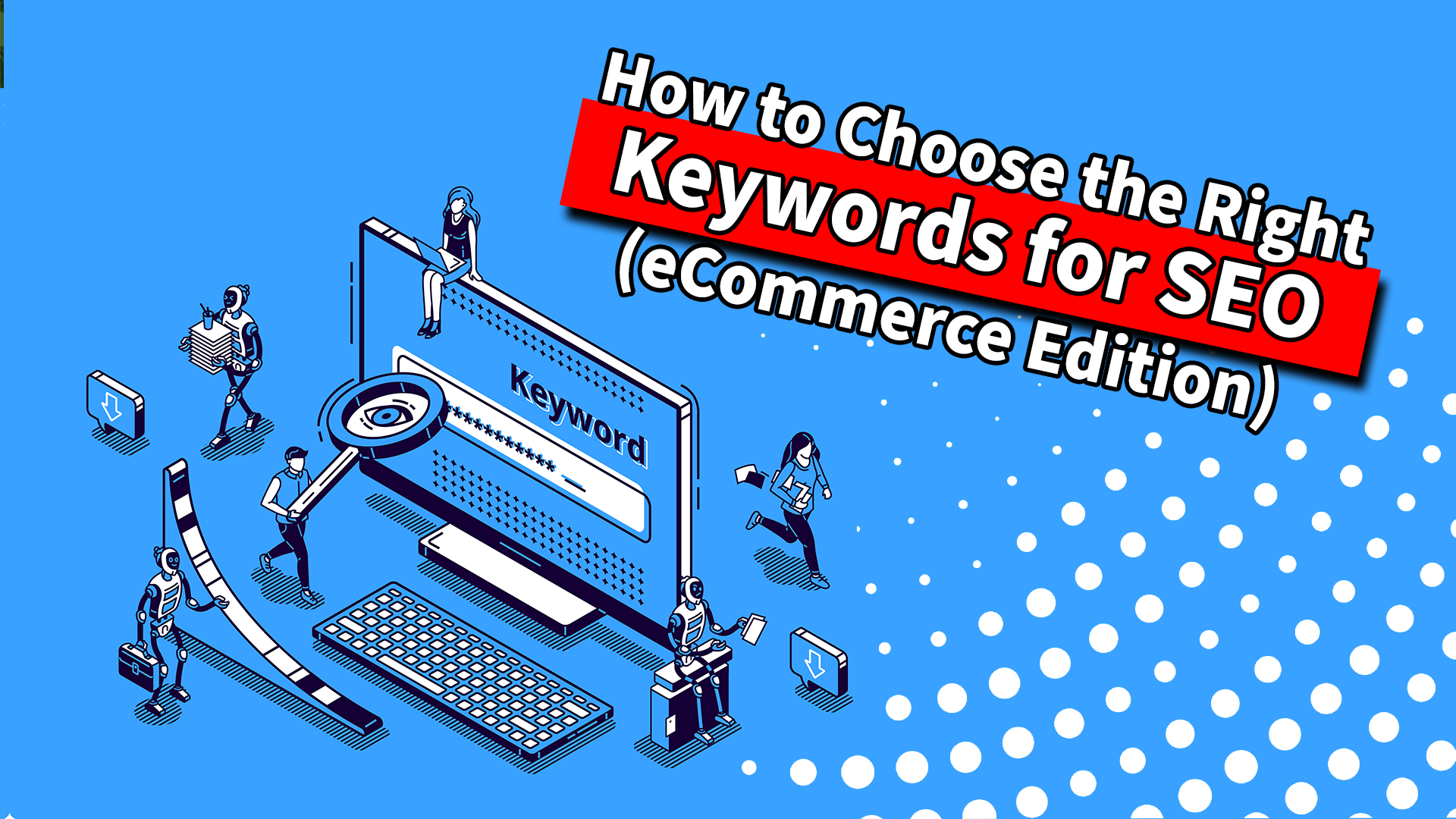SEO has been a popular buzzword for quite some time now. If you analyze this term on Google Trends, you’ll see that it’s been rising in popularity for more than a decade, with its global interest peaking in August 2018.
With Internet usage at an all-time high, the SEO trend will continue to be a major point of emphasis moving forward.
This begs the question, what exactly does SEO stand for?
Simply put, the acronym SEO stands for “Search Engine Optimization.” It sounds technical, but it’s not as complex as you might think.
According to Wikipedia definition, this is the process of affecting the online visibility of a website in a search engine’s unpaid results. This is commonly referred to as organic search results.
For those of you who are unfamiliar with SEO, it’s imperative that you fully understand and apply this concept to your website. That’s why I created this guide. If you continue reading below you’ll learn everything you need to know about search engine optimization that goes far beyond its definition.
Why You Need to Prioritize SEO
Do you really need to focus on SEO? Absolutely.
I see businesses make this mistake all of the time. They think that just because they have an active website, consumers will automatically be able to find them online. That’s simply not the case.
You can’t rely on people navigating directly to your website. In fact, 93% of all Internet experiences start with a search engine.
In order to have a successful SEO strategy, you need to understand how search engines rank websites based on search queries. More specifically, you must understand Google’s ranking algorithm.
Why? Google dominates the global market share of search engines.
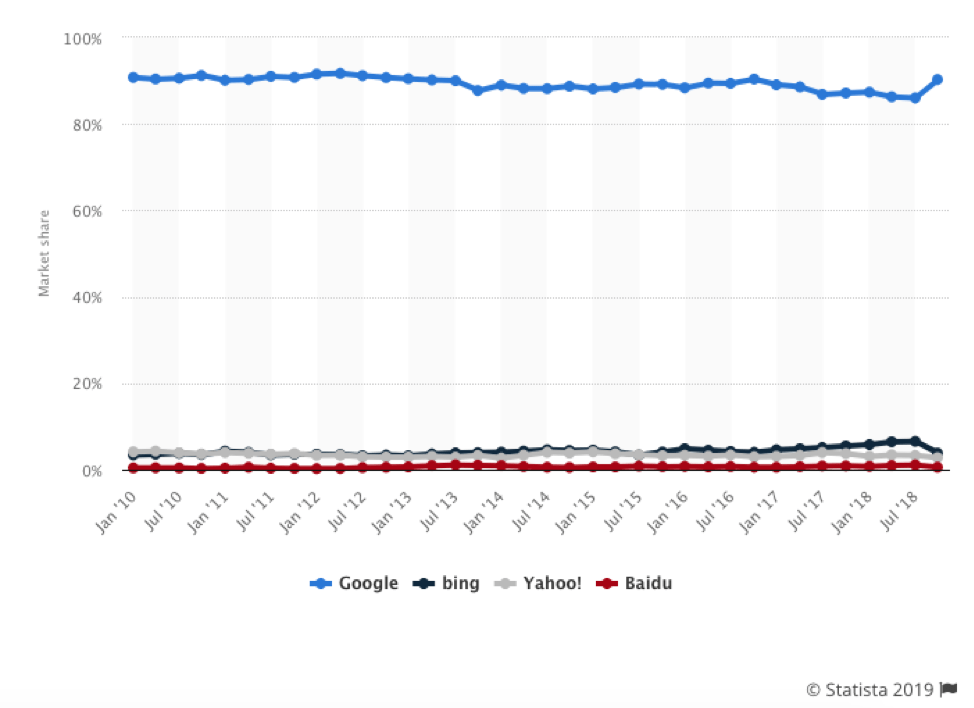
Google can make or break the success of your website based on how it’s ranked according to their methodology.
The whole idea behind SEO is to make your website be a top search result for any given search term related to your business, brand, or industry. Websites that are higher up in the rankings have a greater chance of driving more traffic to their sites.
In fact, 75% of all clicks go to the first page of the search results. The first position gets roughly 33% of those clicks.
Sure, you could always pay to be a top result. But that’s not an effective long-term strategy. 80% of people ignore paid results in search engines.
Without SEO principles applied to your website, you won’t stand a chance of being a top result.
On-Page SEO
SEO can be segmented into different categories. On-page SEO refers to your internal SEO strategy that you can control. Examples of on-page SEO include things like:
- Titles
- Meta descriptions
- Internal links
- External links
- Page loading speed
- Content
We’ll talk more about these elements in greater detail as we continue through this guide.
Off-Page SEO
Off-page SEO is a bit more complex. In theory, off-page SEO is out of your control. Your off-page SEO will impact your domain authority and trustworthiness.
Backlinks are an example of off-page SEO. These are links to your site that appear on other websites. While this isn’t something that’s completely in your control, there are steps you can take to increase your chances of building backlinks.
Historically, websites used to purchase backlinks to improve their search ranking. Although search engines have become wise to this practice and developed systems to catch anyone involved in the matter. If caught, this will backfire and your site will be penalized. So I can’t say I recommend this.
I’ll explain how to build backlinks the right way later on.
Mobile SEO
While both on-page and off-page SEO will affect your mobile search rankings, this category is worth mentioning on its own. With mobile usage on the rise, mobile SEO has become more important than ever before.
87% of people with smartphones use their devices to conduct an Internet search at least once each day. Search engines have recognized this trend and have adjusted their methodologies accordingly.
Google has started to apply mobile-first indexing to search results.
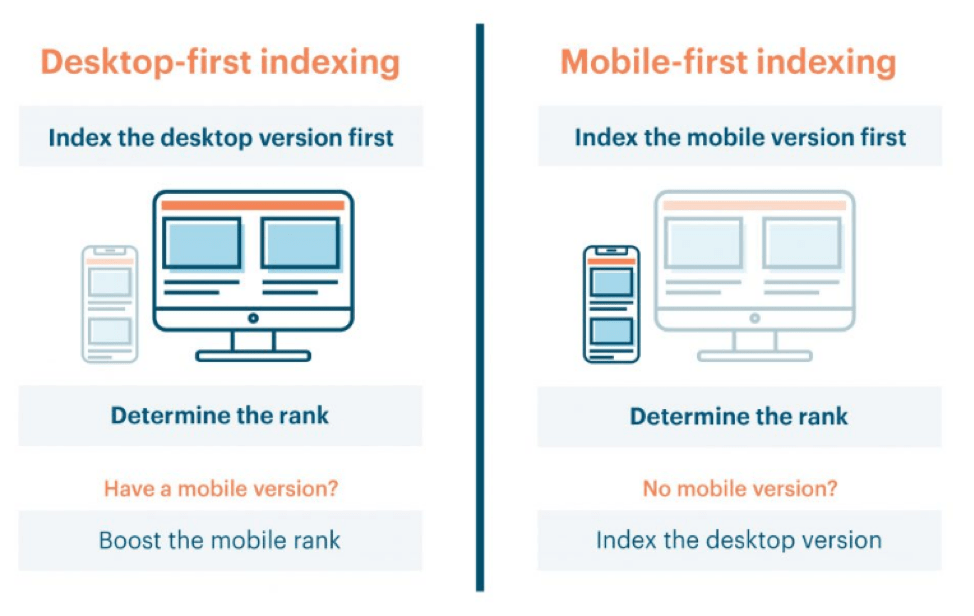
What exactly does this mean?
Basically, the mobile versions of websites are being used to determine search rankings. So just because a website has a high desktop ranking, it doesn’t necessarily mean that will be the case when people are conducting searches from mobile devices.
So you need to make sure that all of your website content is properly optimized for mobile devices. Otherwise, your mobile SEO rankings will suffer.
How to Improve Your SEO Ranking
Now that you know what SEO stands for and some of the basics, it’s time for you to develop an SEO strategy. There are certain steps you can take to boost your SEO rankings on search engine results.
I’ll go through some of the top factors that impact your rankings and explain what you can do to optimize these elements for search engines.
Page Loading Speed
The time it takes for your pages to load has a huge impact on SEO. There are a couple of reasons for this.
First, search engines will penalize you for slow loading times, and reward you for fast ones.
But page loading time impacts the way people interact with your website, which will affect the way search engines see your website as well.
As page loading times increase, abandonment rates increase as well.
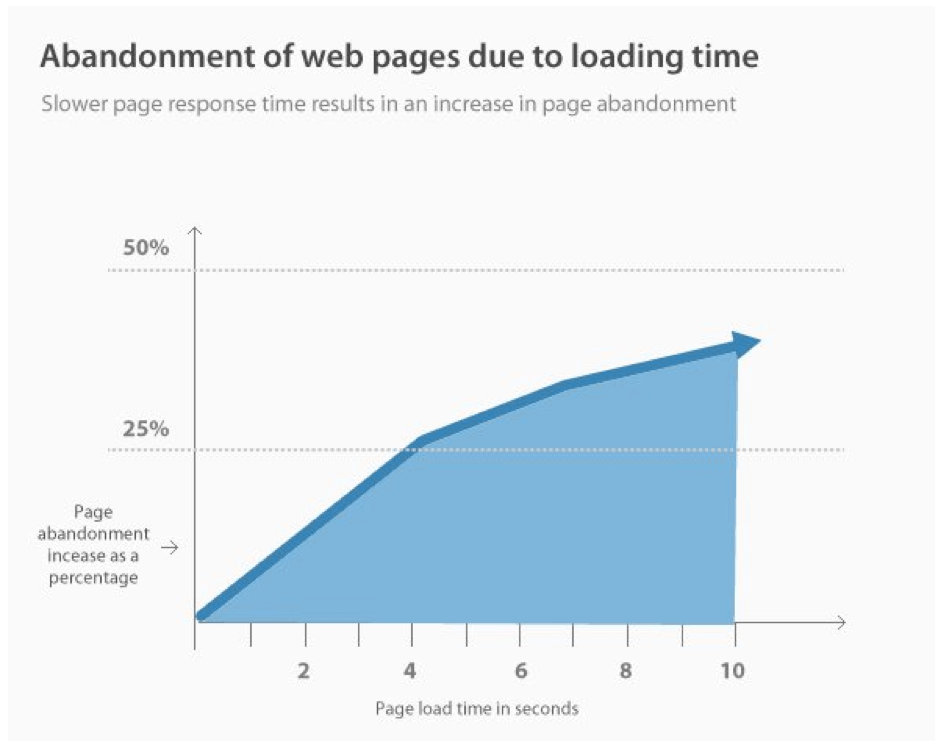
40% of people abandon websites that take more than three seconds to load. 80% of those people won’t return to that site.
So how fast does your website need to be?
According to a recent survey, 47% of people say they expect web pages to load in two seconds or less.
On the other hand, if your website loads quickly, it will improve the user experience. This will keep your abandonment rates low and ensure that those people keep coming back to your website. All of this will boost your SEO rankings.
If you’re not sure how fast your website loads, you can take advantage of free online resources like the Pingdom website speed test.
Keyword Research
Keywords are arguably the most important aspect of search engine optimization. You need to include words and phrases on your website that people will search for when they’re browsing online.
But in order to do this, you need to learn what people are searching for. The more specific you can get your keywords to match those inquiries, the greater chance you’ll have of being ranked as a top result.
When you’re conducting keyword research, it’s better to focus on long-tail keywords as opposed to single words. Here’s why.
Let’s say you sell bikes. The word, “bike” is highly competitive. But if you’re running SEO campaigns to rank for something like, “red mountain bikes for teenagers” it’s much more specific.
The volume of those searches will be lower, but those keywords will be less competitive and you’ll end up with more qualified leads.
There are tons of free and paid keyword research tools online. You can also Google Analytics to see which keywords are driving the most traffic to your website.
Blogging
Keywords and blogging go hand in hand. Without a blog, it can be challenging for you to implement keywords naturally on your website.
But if you write blogs on a regular basis, it’s a great opportunity for you to try and rank for terms related to your blog.
That’s why websites with more monthly blog posts have higher indexed traffic.
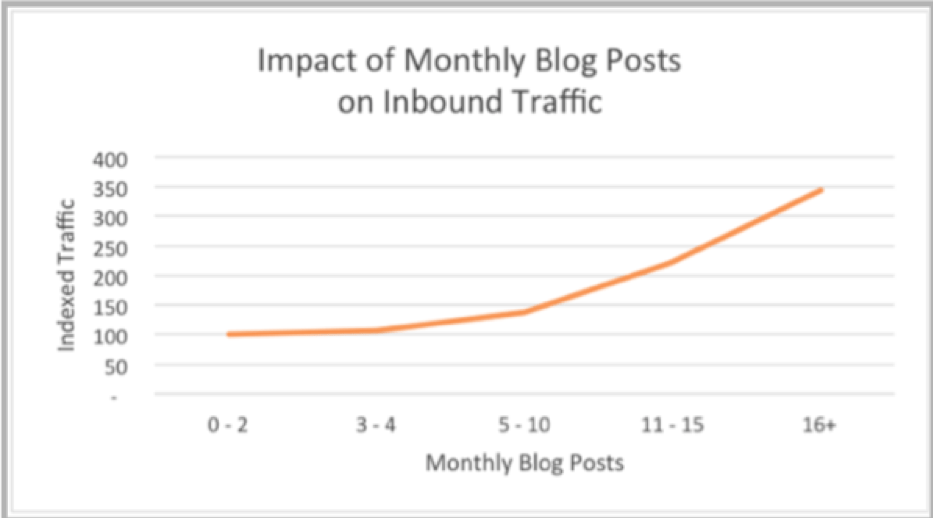
Blogging allows you to step outside of the box and rank for more relevant terms that are related to your business.
For example, let’s say you run a local tour bus company in San Francisco. Based on the nature of your business, you’re primarily targeting people who are visiting from out of town. People may not necessarily search for, “tour bus in San Francisco,” but you can write blog posts about other topics that your target market will search for.
- Things to do in San Francisco
- Places to stay in San Francisco
- Best coffee shops in San Francisco
- What to do in San Francisco on a budget
These are all search terms that are relevant to your target market, and would otherwise have no place on your website without a blog.
Blogs are also ideal for internal link building, which will help you with SEO. In any given blog post, you can link to another blog or to other landing pages on your website.
Inbound Links and Outbound Links
Let’s continue talking about links and their relevance to SEO.
Inbound links or backlinks to your website that come from other sites are related to off-page SEO, which we talked about earlier. While that’s something that is theoretically out of your hands, there are steps you can take to build backlinks on a regular basis.
You just need to give people a reason to link to your site. For example, maybe you conducted a case study or some type of research. You share those findings in a blog post. Another website might want to use that data, so they’ll give you credit for your findings.
Another way to build backlinks is by guest blogging. Reach out to publications that accept guest posts. They’ll likely let you include a link to your site in the bio or somewhere else in the post.
Outbound links are beneficial for SEO as well. If you’re taking information for an authority domain, you should cite your sources with a link. The best way to do this is with clickable anchor text.
Broken Links
I’m not quite done discussing links and their importance to search engine optimization. Broken links are something else that you need to keep your eye on, especially if you have lots of outbound links on your website.
If you have broken links on your site, it will hurt you in terms of SEO. But monitoring those links can be a challenge.
Let’s say you’ve been blogging three times a week for the last year. That’s more than 150 posts, each containing a handful of links to other websites. It’s unrealistic to manually check all of those on a daily basis to see if they’re still working.
Instead, you can use tools like Dead Link Checker.

You can set up an account and have them check your website on a regular basis. You’ll get reports emailed to you automatically.
If they identify a dead link, you can remove or replace it right away.
Here’s another trick for dead links. You can use this to monitor other websites related to your industry as well. If you identify any dead links in their content, contact the webmaster and notify them. You can suggest that the dead link gets replaced with a link to your website.
Of course, they are under no obligation to do so, but it’s worth a try. After all, you’re doing them a favor by letting them know about dead links on their website. While this strategy requires a little extra effort, it’s another great way to build backlinks.
Quality Content
Dwell time is another KPI that you should be tracking. This refers to how much time people spend on your website each time they visit.
If people spend a long time navigating on your site, visiting multiple pages, and engaging with your content, you’ll be rewarded by search engines. The best way to keep people on your site for longer periods of time and keep them coming back for more is with high quality content.
Let’s tie this back into some concepts that we already talked about; blogging and keywords.
You can’t just publish a blog that’s designed for search engine crawlers. These blogs need to be written for people. If you stuff a blog with keywords that are unnatural and don’t sound right, two things will happen.
- You’ll be penalized by search engines for keyword stuffing.
- Website visitors won’t engage with your content.
But if your writing is informative and speaks to your audience, it will have a positive impact on your SEO strategy.
Header Tags
All of the text on your website is not created equally. You need to use header tags for SEO purposes. Here’s why.
From a visitor’s perspective, header tags and title tags tell them what your pages are about, which makes it easier for them to navigate and consume your content. But search engines recognize these tags as well in terms of importance.
Plus, header tags are a great way to make your content more visually appealing and readable. It’s difficult for people to read large blocks of text, but header tags break up your content and make the page flow in a logical order.
Meta Descriptions
Meta Descriptions are part of your listing in SERPs. It’s a quick snippet below your title that should be roughly 160 characters.
According to Rank Ranger, the average meta description length of an organic search result is 165 characters (as of February 2019).
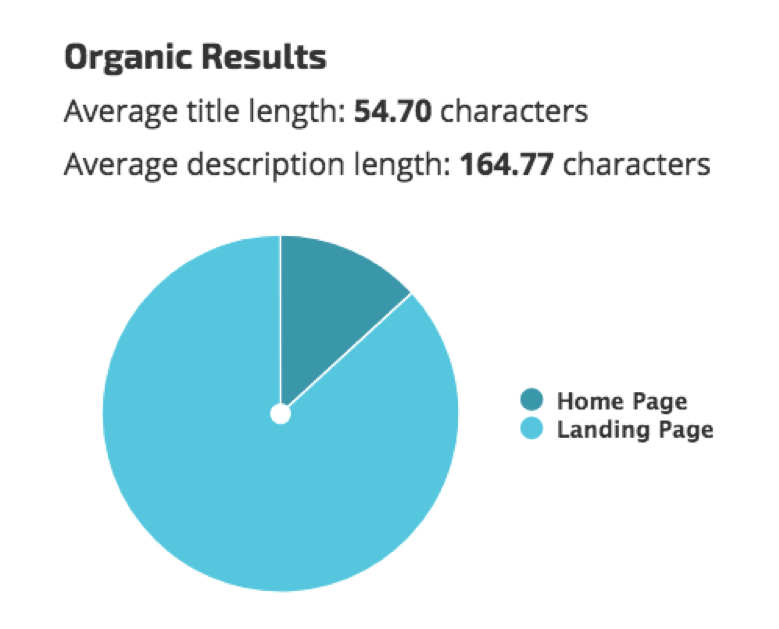
While Google doesn’t technically restrict your character limits for meta descriptions, it’s in your best interest to keep them short. Otherwise, your entire description won’t be displayed. If a portion of the description is cut off, it’s not going to be as appealing to users who are searching for something.
You’ll definitely want to add keywords to your meta description as well, to make them even more SEO friendly.
Images, Videos, and Other Visuals
Visual components on your website will help boost your SEO rankings. Each time you add an image to your website, you can optimize it for search engines by using keywords in the image file.
Beyond that, this type of content improves the user experience. Remember, everything you do shouldn’t just be trying to please search engine crawlers. Your website content needs to be beneficial to real people.
Visual elements break up your content. It makes things easier to read and understand.
Visuals can also help you build backlinks, which we discussed earlier. For example, let’s say you created custom infographics on a particular subject. Another blogger wants to use your infographic to enhance their blog post. As a result, you’ll get credit as the source of that graphic.
Here’s something else to keep in mind. 68% of consumers would rather watch videos about content than read about it.
That’s I frequently hold surge sessions where I create videos about topics and embed them in my blogs to enhance the posts.
By giving people what they want to see, it will keep them coming back to your website on a more frequent basis, which boosts your SEO ranking.
XML Sitemaps
Google is committed to making sure that users see the most relevant results for any given search query. So they use crawlers and bots to analyze, organize, and index information on the web.
By adding an XML sitemap to your website, it makes it easier for these crawlers to read the content on your website. As a result, your pages will be indexed accordingly, which improves your chances of increasing your SEO ranking.
Sitemaps tell search engines the location of each page on your website, the last time it was updated, the updating frequency, and how important each page is in relationship to other pages on your website.
If you don’t have a sitemap, Google might think that your website has duplicate content. This would be harmful to your search ranking.
Sitemaps need to have a logical hierarchy. Here’s a visual representation to show you what I’m talking about.
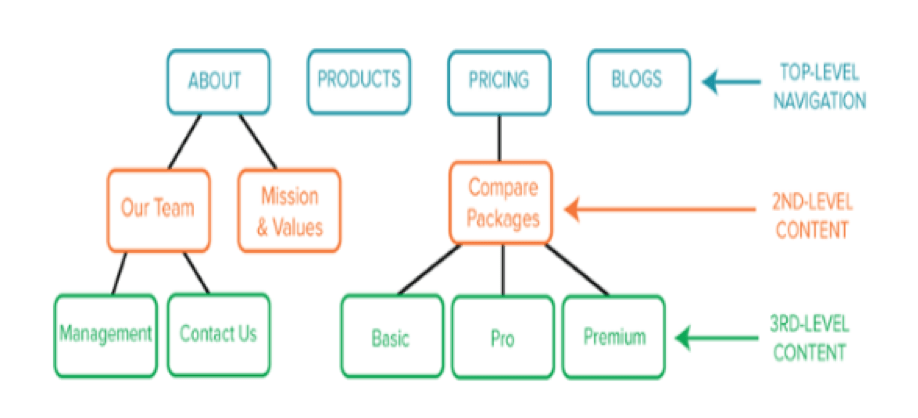
Each landing page is defined by top level, second level, or third level content. Let’s look at the pricing pages as an example.
The “premium” pricing package wouldn’t make sense if it was above “compare packages.”
Your XML sitemap will also represent the flow of how users navigate on your website. This forces you to segment your content into tiers based on the level of importance.
Contact Information
Your website needs to be trustworthy. The more trustworthy your website is, the greater chance you have of having a higher domain authority.
That’s why all of your contact information needs to be visible and easy to find on your website.
- Official name of your company
- Physical address
- Mailing address
- Phone number
- Email address
Without this information, people could potentially report your website as one that’s untrustworthy. This will severely damage your search rankings.
Plus, if there are lots of negative reviews and perceptions about your business on the web, less people are going to visit your site in the first place. 84% of people trust reviews online as much as a personal recommendation from a friend.
Social Sharing
While Google says they don’t use social media to rank websites, that doesn’t mean you can’t boost your SEO with social platforms.
If your content is highly shareable and available via social media, it will drive more traffic to your website.
Hootsuite conducted a study on this recently. Here’s what they discovered.
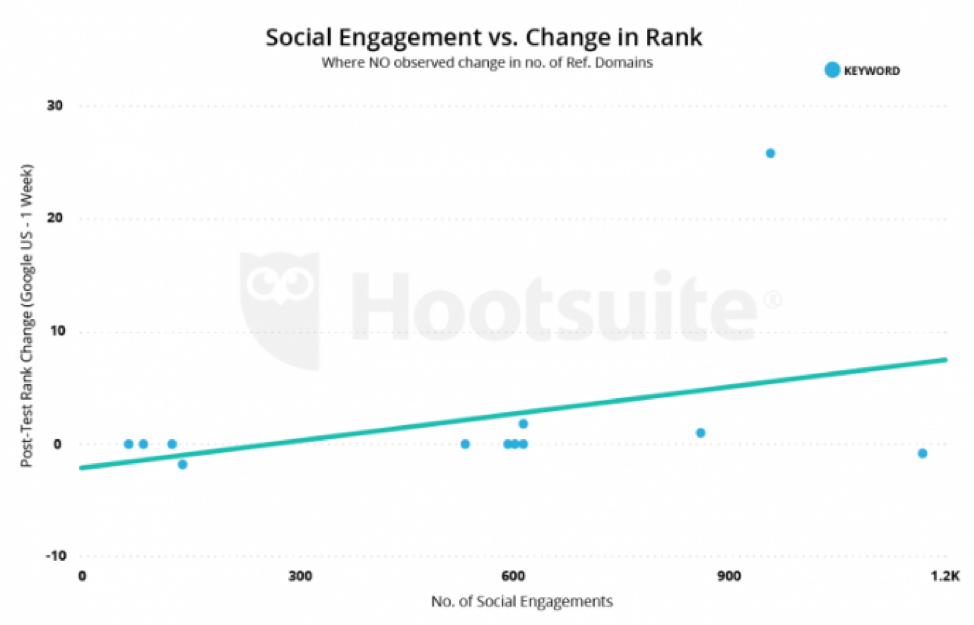
There is a positive correlation between social media engagements and page rankings.
Even if search engine algorithms aren’t using those engagements to rank your website, the results of those actions benefit your SEO strategy.
For example, let’s say you share a blog post or infographic on Facebook. Your followers like, share, and comment on it. Your search ranking won’t change because of this. However, this increases brand exposure, domain authority, and drives more traffic to your website, which will positively impact SEO.
Moving Forward With SEO
SEO needs to be a top priority for all websites in 2019 and in the future.
You need to understand how people consume content online. Whether they want to buy something, find information, or learn how to do something, they’re going to start with a search engine.
If your website isn’t at the top of the SERPs, you’re not going to get traffic to your website. Instead, users will land on your competitors’ sites.
For those of you who are new to SEO and don’t know where to get started, you can use this guide as a reference to help you optimize your pages. You can also take advantage of the SEO services we have here at Optimum7. Just contact us, and we’ll be happy to assist you.



